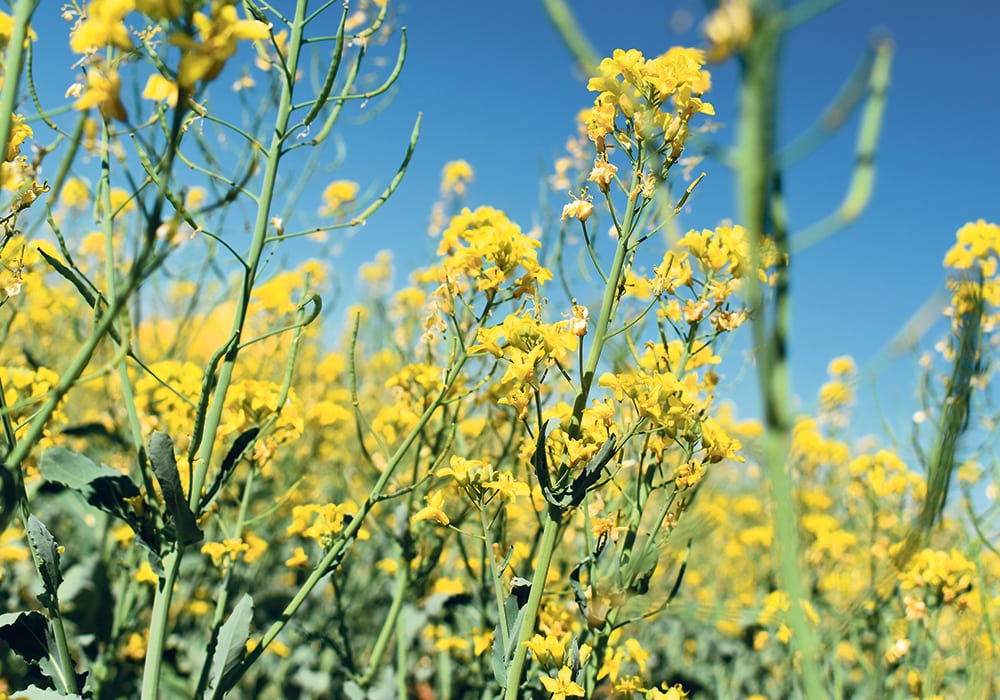Crop walk reveals uneven maturity, but farmers say their dryland crops look better this year than they did last year
TURIN, Alta. — Variable maturity levels appear to be a common problem in southern Alberta canola fields lacking irrigation.
Autumn Barnes, agronomy specialist with the Canola Council of Canada, said she is seeing quite a few crops with that problem in her areas south of the Trans-Canada Highway.
NOTE: Corrections were made to this story on July 23, 2018.
“A lot of variable emergence issues this year, for sure,” said Barnes, “because it’s been so dry for the last 12 months plus. We were pretty low (in soil moisture) coming into the spring.”
Read Also

Farming Smarter receives financial boost from Alberta government for potato research
Farming Smarter near Lethbridge got a boost to its research equipment, thanks to the Alberta government’s increase in funding for research associations.
A canola crop walk hosted by Serfas Farms near Turin July 11 brought producers to survey a dryland crop with that very problem. The area has received only about 75 millimetres of precipitation since April and the crop in the host field, seeded May 2, averaged four plants per sq. foot. Six per sq. foot is the preferred number.
“We’re probably showing you one of the more challenging fields,” said Serfas Farms field operations manager Alvin French.
Many plants showed early stages of heat blast but even so, Kevin Serfas said the dryland canola looks better this year than it did last year, when extended hot temperatures drastically reduced yield.
“The nights seem to be cooling down and that’s helping the crop at least hold on. We’re not waking up and its 20 degrees already at 8 o’clock in the morning.”
Serfas said variable emergence looks to be a common problem. On a recent trip from Turin to Calgary, “unless you had irrigation, I was actually shocked to see how many fields looked as bad as mine does, if not worse.
“But, what’s up is up. It would be really nice to get another inch of rain out here.”
After first experimenting with pod shatter-resistant varieties two years ago, Serfas went all in this year and planted all fields to shatter-resistant types. That will allow him to wait longer for late bloomers to mature, then desiccate and straight-cut the crop.
“This year we decided just for simplicity and the fact that it’s just another tool that we have as farmers in our tool box, we decided to go 100 percent pod shatter (resistant). I think it’s going to turn out well for us.”
Barnes said shatter-tolerant varieties could pay off, even those that have lower yield potential.
“Especially in a year like this, if you’ve got a shatter-tolerant variety that maybe has a little bit less yield potential but it can hold onto those seeds, that’s yield right there.”
Barnes said dry conditions in the south led to more herbicide issues in canola because less moisture means less biological activity in the soil. Purple, twisted growth points can indicate group 2 herbicide injury.
Insects have also been an issue, with more flea beetles than usual, which required more insecticide treatments. On the other hand, cabbage seedpod weevil levels were low and low moisture also means potential savings on fungicide.
“Even though it has been dry down here, not to make light of it at all, but we are kind of limping along and we’re kind of hoping for the best come harvest,” said Barnes.


















